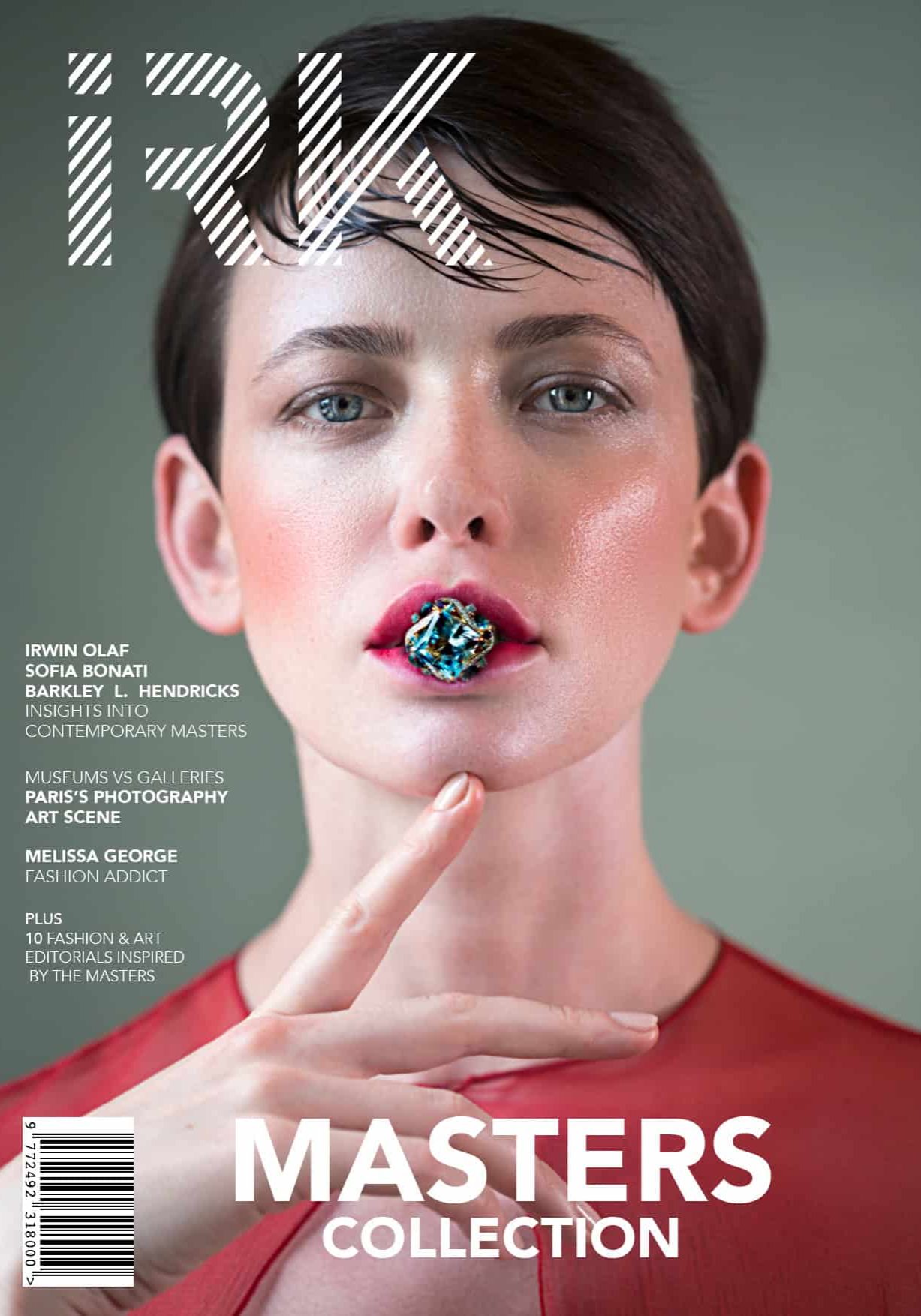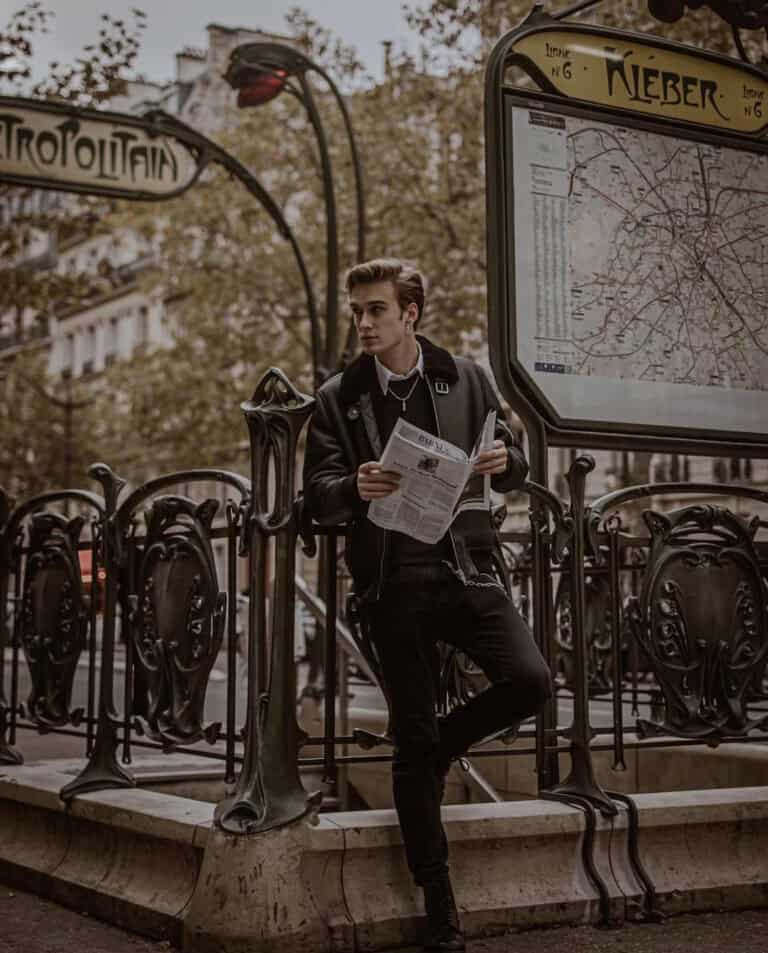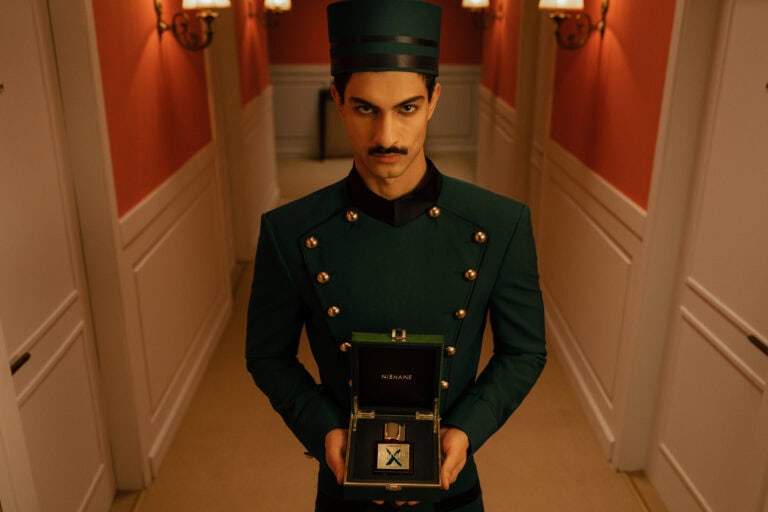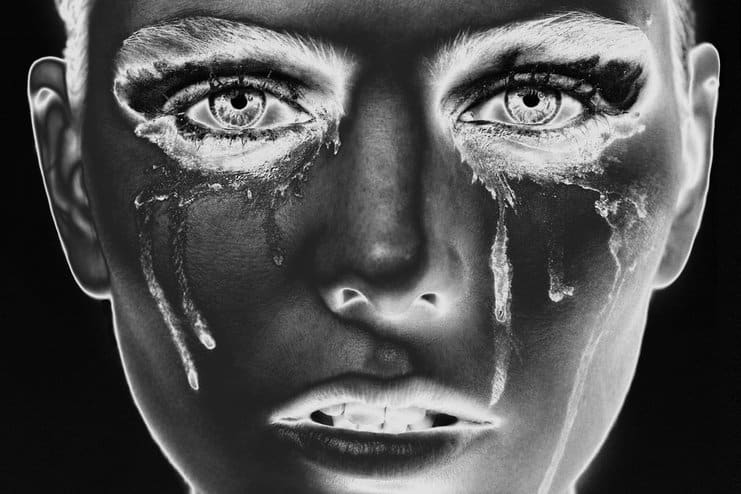
Art and Activism: Indira Cesarine’s Mission with The Untitled Space
IRK Magazine
We had the pleasure of speaking with Indira Cesarine, the visionary founder of The Untitled Space gallery. As a multifaceted talent, Indira Cesarine wears many hats—curator, artist, photographer, and editor-in-chief. Over the years, she has curated more than 50 exhibitions and showcased the work of over 500 artists, placing a strong emphasis on promoting women artists and giving a voice to marginalized communities.
In this conversation, we will delve into Indira Cesarine’s curatorial process, exploring the innovative and thought-provoking ways she brings exhibitions to life. We will also discuss the inspiration behind The Untitled Space, a gallery renowned for its dedication to fostering social change through art. Moreover, we will uncover the various initiatives and projects that Indira Cesarine has spearheaded to champion diversity and inclusion within the art world.

IRK: You’ve curated over 50 exhibitions and exhibited artwork by more than 500 artists at The Untitled Space gallery. Could you share some insights into your curatorial process and how you select artists for your exhibitions?
Indira Cesarine: My curatorial process is deeply rooted in the belief that art should provoke thought, challenge societal norms, and inspire. Each exhibition I present is carefully curated to create a cohesive narrative or thematic focus. When selecting artwork, I look not only for visually inspiring work, but also aim to create a diverse and inclusive space that showcases a wide range of perspectives. Over the past decade, I have exhibited the work of over 500 artists, showcasing painting, sculpture, photography, video, performance, and interdisciplinary practices, with an emphasis on women artists that shed light on the female experience. Women artists have been marginalized throughout history, and having the opportunity to share their work and support equality through our exhibitions means a lot to me. My goal is to create exhibitions that are not only visually striking but also thought-provoking and impactful, sparking important dialogues. I regularly present open calls for the gallery so that artists can submit their work for review, as we get so many requests for exhibitions. Open calls help me see who is out there and I have discovered many incredible artists through our open call platform. It is important for me to see a cohesive body of work that is original and thought-provoking when I am selecting artists, I tend to steer away from generic or decorative artwork.
IRK: What inspired you to open The Untitled Space, and what distinguishes it from other galleries?
Indira Cesarine: I have always been very passionate about art. I had my first exhibit when I was 16 years old and later majored in Art History and Women’s Studies at Columbia University. After graduating, I worked as a photographer and magazine editor for many years. In 2009, when I launched The Untitled Magazine, I started curating exhibits for the magazine, and one thing led to another. Once I started curating I realized that most galleries at that time only had one or two token female artists, if any, and very few galleries exhibited feminist-themed artwork. I eventually founded The Untitled Space as a direct response to this gender imbalance and the lack of representation for women artists. Our first exhibit was called “The F Word: Feminism in Art,” and was created in celebration of The “GIRLPOWER” Issue of The Untitled Magazine.
That was just such an incredible experience I was inspired to keep curating and to continue to bring more opportunities to women in the arts. The Untitled Space is one of the few commercial galleries that primarily exhibits women artists. Most galleries that focus on women artists are non-profits, and I felt strongly that women artists shouldn’t be charity cases.
I envisioned the gallery as a platform to amplify feminist voices and showcase the innovative, boundary-pushing work of female-identifying artists. Unlike many commercial galleries that prioritize commercial success over artistic merit, The Untitled Space is also driven by a mission to challenge the status quo, while presenting empowering artwork by emerging and underrepresented artists. Over the years we have expanded the curatorial program to emphasize diversity, featuring not only art by women, but also LGBTQ+ artists, and other marginalized voices. The gallery has become known for its boundary-pushing and controversial exhibitions that challenge traditional narratives and stereotypes. Our exhibitions often tackle sensitive social and political issues head-on. The Untitled Space has showcased work that explores themes of equality, sexuality, reproductive rights, racial injustice, and many other topics that other galleries tend to shy away from as they are considered “too controversial”. I believe in using art as a medium for activism and social change. Over the past few years, we have seen a lot of progress in the art world with more representation of women and diversity of artists, although there is still a lot of progress to be made. Feminist art is definitely still considered very “niche.”
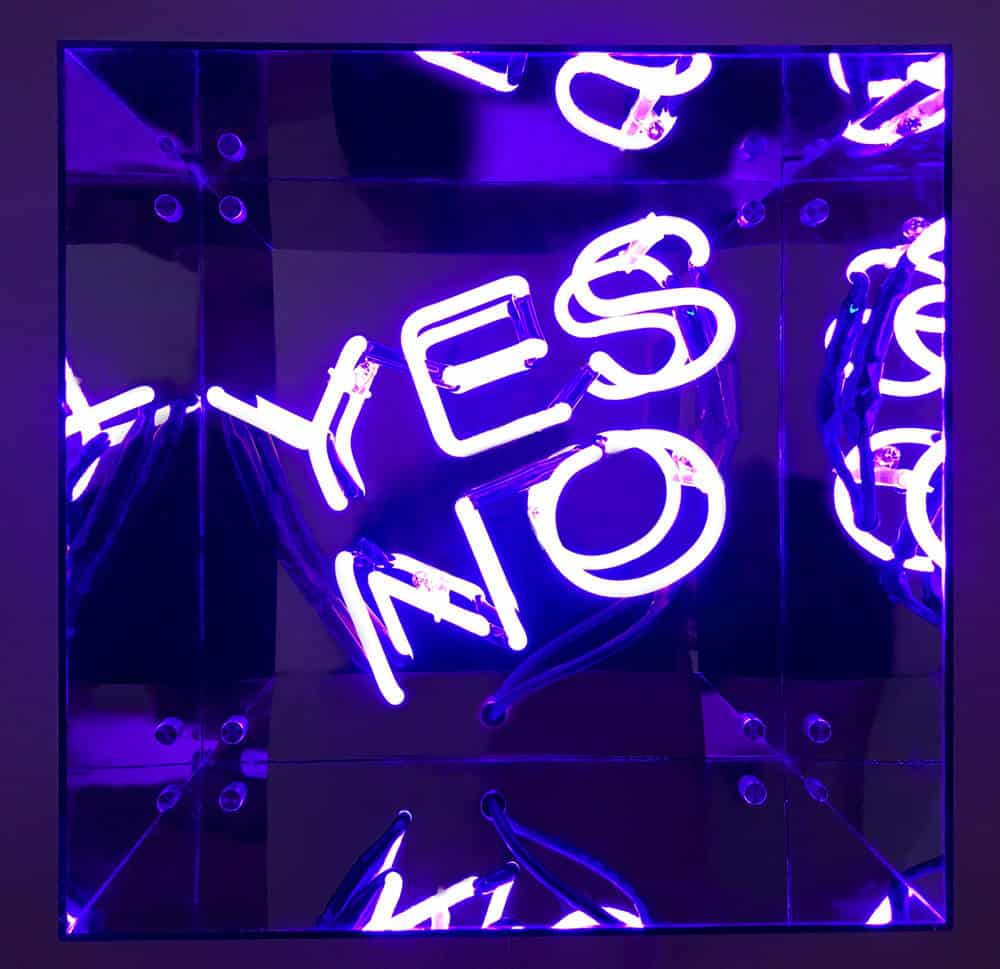
IRK: Your gallery has partnered with various charitable foundations for fundraising initiatives. What role do you believe art plays in raising awareness and funds for important social causes?
Indira Cesarine : I believe that art has the power to catalyze social change and raise awareness for important causes. The Untitled Space has partnered with many non-profit charitable foundations over the years to host fundraising initiatives that leverage the transformative potential of art, including the ERA Coalition, She Should Run, Women’s Fund For Equality, The Coalition for the Homeless, SaveArtSpace, and SeekHer Foundation, among others. Whether it’s raising funds for equal rights and reproductive rights organizations, supporting more women to run for office, or other important issues such as the homeless crisis, these collaborations allow us to harness the emotive and persuasive qualities of art to drive real-world impact. By pairing thought-provoking exhibitions with charitable giving, we create a synergistic effect that not only raises critical funds, but also sparks important conversations and inspires action. Art has the ability to transcend language and cultural barriers, be a powerful tool for activism and social change, and help raise funds for important causes.
IRK: The Untitled Space highlights a program of women in art. What inspired you to focus on this aspect, and how do you see it impacting the art world?
Indira Cesarine : When I first started, there were almost no women working as photographers and few opportunities for contemporary female artists. I was faced with a lot of gender discrimination and had to work ten times harder than my male counterparts – but I was very persistent and didn’t take no for an answer. Photography and contemporary art were totally male-dominated industries, and women were completely sidelined. I found that in the UK and Europe, they were a lot more open to working with women, so I spent a lot of time overseas. These experiences made me determined to fight for change, for female empowerment and gender equality. The corporate world has had a lot of initiatives to prevent discrimination, but it is far more challenging in the creative industries where everyone is freelance.
My decision to focus on women in art at The Untitled Space stems from this deep-seated passion for gender equality and a desire to challenge the systemic biases that have long marginalized female artists. Throughout history, the art world has been dominated by men, with the contributions of women artists often overlooked, undervalued, and excluded from the canon. By centering on the work of female-identifying artists, I aim to not only correct this historical imbalance but also empower a new generation of creatives to claim their rightful place in the art world.
The Untitled Space provides a vital platform for women artists to share their stories, explore their identities, and push the boundaries of what is possible in the realm of visual expression. In doing so, we’re not only elevating individual practices but also chipping away at the entrenched patriarchal structures that have long constrained the art world. The gallery’s exhibitions aim to challenge stereotypes, break down barriers, and promote gender equality in the arts. My hope is that by shining a spotlight on women artists, we can inspire lasting change and pave the way for a more inclusive, equitable, and representative art ecosystem.
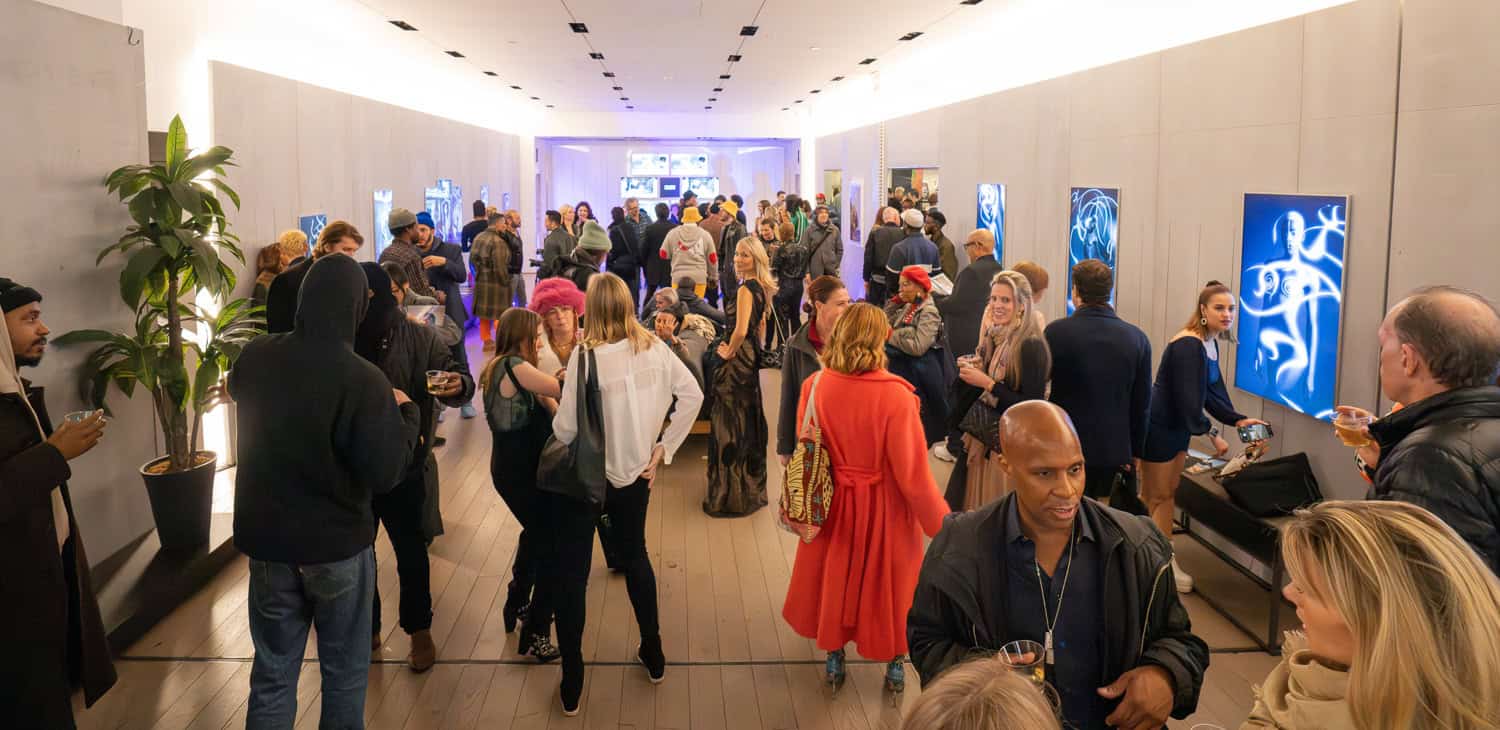
IRK: Can you tell us more about your initiative, Art4Equality, and its mission to support equality-themed art exhibitions and projects?
Indira Cesarine : Art4Equality is a nonprofit I launched in 2019 supporting equality-themed art exhibitions and special projects including films and public art by female-identifying artists and allies. It is a direct extension of The Untitled Space’s mission to use art as a tool for social justice and gender equality. I wanted to create a non-profit to expand our reach with larger scale projects and public art, and have a platform to raise funds for our mission. Through curated exhibitions, public art installations, film screenings, and educational programming, Art4Equality supports artists whose work explores themes of equality, diversity, and human rights. Our mission is to use art as a catalyst for social change, promoting diversity and inclusion. Through exhibitions, public art, and our other special projects and initiatives, we strive to inspire dialogue, raise awareness, and drive positive action on issues of equality and social justice.
Projects have included a public art billboard campaign in collaboration with non-profit SaveArtSpace, “Art4Equality x Life, Liberty & The Pursuit of Happiness,” which was a two-part exhibition throughout the 2020 Presidential election. It featured billboards by different artists inspired by themes of equality and social justice in a variety of locations throughout New York City, along with a gallery exhibition at The Untitled Space featuring the work of over 50 contemporary artists. We have also hosted several benefit art auctions supporting equality-driven charitable causes, such as the “My Choice” Benefit Auction featuring 20 artists raising funds for reproductive rights, as well as our “Rapture” benefit art auction which featured artwork by 25 artists supporting The Coalition of the Homeless. You can read more about Art4Equality’s mission on our website – where we also include a number of alarming statistics regarding equality and diversity in the art world. There has been a lot of progress in the last few years by galleries and institutions to promote change and it’s important to be a part of that movement.
IRK: As an artist, photographer, director, and curator, you have a diverse creative background. How do these different roles intersect in your work, and how does each inform the other?
Indira Cesarine: My career has evolved over the years. I started out after graduating college as a photographer and magazine editor, and as my career progressed I got into directing short films and videos. My photography even in the fashion realm has always placed an emphasis on depicting women with strength, sensitivity, and intelligence. It was very intuitive for me as an artist and photographer to highlight the female gaze with my work. After I launched The Untitled Magazine in 2009, many things opened up for me, including curating large-scale exhibitions. My early art curatorials were in collaboration with the magazine, often with established institutional spaces, art fairs, festivals, or non-profits. In 2015, after curating a number of exhibitions including at Art Basel Miami, Cannes Film Festival, and in collaboration with the Louvre Museum, I was inspired to launch The Untitled Space gallery which brought everything together. It was a natural progression with my work as a curator to open my own gallery and I was very inspired to create a platform for women in art. I think my diverse creative background allows me to approach my work from a multifaceted perspective, drawing on a range of skills and experiences to curate more impactful and thought-provoking projects and exhibitions. As a practicing artist, I have a deep understanding of the creative process and the unique challenges that artists face. My experience as a photographer has also honed my eye for visual storytelling and composition. It can sometimes be challenging navigating my different interests and managing a career as an artist while also curating exhibits, but for the most part, I think it enhances the exhibits I curate as I can bring unique insight having navigated such a diversely creative background, and bring that experience to the table.
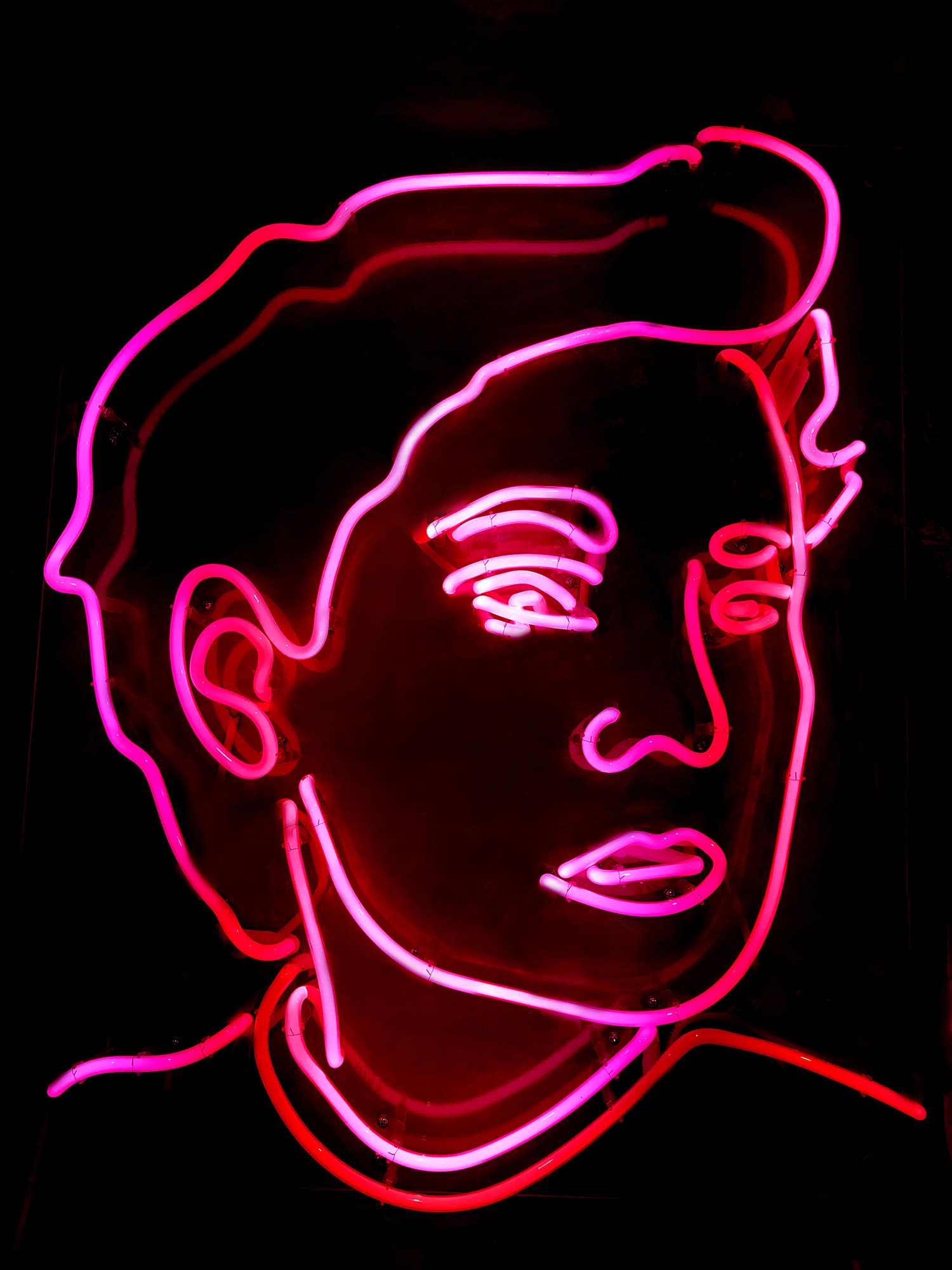
IRK: Your exhibitions have been featured internationally in numerous publications. How do you approach the promotion and marketing of exhibitions to ensure their success and reach?
Indira Cesarine: Coming from a background working with magazines and having worked internationally as a photographer with many publications, I have always understood the importance of editorial coverage. It is extremely important to have our exhibitions and artists highlighted by journalists and relevant publications. As a curator you want the artwork to be seen and the artists to be heard. The artist’s statement needs to be conveyed along with the work, as with contemporary art it’s about the message behind the work not just the visuals. Promotion and marketing are crucial aspects of ensuring the success and reach of our exhibitions. We employ a multi-faceted approach, utilizing social media, press releases, email marketing, and partnerships with other organizations such as Artsy to reach a wider audience.
We also prioritize building relationships with journalists, critics, and influencers to generate buzz and media coverage for our exhibitions and artists. The gallery hosts opening receptions, artist talks, and special events to further engage with art lovers, collectors, and the press. Social media is such a big part of the picture these days, so we put a lot of emphasis on that. The most important thing is to be presenting strong artists, and impactful, original exhibitions. People will support what you are trying to do if they believe in it and see its relevance. We pitch our exhibitions and artists to media outlets, send newsletters, promote on socials, and put a lot of effort into reaching our audience. It’s a priority for the artwork to be seen and talked about.
IRK: The Untitled Space is committed to exploring new ideas and mediums in art. How do you see the role of galleries evolving in the digital age, especially with the rise of online platforms?
Indira Cesarine: I believe that the combination of online and offline platforms will be essential for the future of the art world. The rise of online platforms has expanded the reach and accessibility of art, allowing galleries to connect with audiences around the world. At The Untitled Space, we embrace digital innovation while remaining committed to the unique experience of viewing art in person. We utilize online platforms such as our website, social media, our e-commerce platform (untitled-space.art) as well as online partnerships with art platforms including Artsy, and 1st Dibs to extend the reach of our exhibitions and engage with virtual audiences. We also recognize the importance of the physical gallery space as a site for dialogue and interaction.
While online platforms have undoubtedly expanded access to art and democratized the industry to some degree, there is still immense value in the tactile, immersive experience of encountering art in a dedicated gallery setting. At The Untitled Space, we strive to create exhibitions that are not just about visually captivating, but also deeply experiential, inviting viewers to engage with the work on a multisensory level. Whether it’s a large-scale installation that transforms the entire gallery space or an intimate, interactive performance, these in-person encounters have the power to forge deep, lasting connections between the viewer and the art. By striking a balance between physical and virtual experiences, we can create a dynamic, multifaceted experience that caters to the evolving needs and preferences of contemporary audiences.
IRK: What advice would you give to emerging artists looking to exhibit their work in galleries or participate in exhibitions?
Indira Cesarine: My advice to emerging artists looking to exhibit their work in galleries or participate in exhibitions would be to stay true to their artistic vision, be persistent in their pursuit of opportunities, and not be discouraged by the challenges of the art world. It’s important to believe in yourself! Don’t worry about what other people think about you or your artwork. I always tell people if everyone likes your artwork, then it probably isn’t very good. Don’t be afraid to be different. It’s better to find your style and voice rather than to try to emulate others, as being unique is what makes an artist stand out. It’s important to develop a strong, cohesive body of work that reflects your unique perspective and creative voice. Invest time in building relationships with curators, gallerists, and other industry professionals, as these connections can open doors to exhibition prospects. Don’t be afraid to take risks and experiment with new mediums or approaches – some of the most groundbreaking art often comes from those who are willing to push boundaries.
And perhaps most importantly, believe in the power of your own work and its ability to make a meaningful impact. The art world can be notoriously fickle and competitive, but by staying focused and authentic emerging artists can carve out their place and make their voices heard. I recommend attending exhibit openings and art fairs to meet people in the industry, being active on social media, doing studio visits with curators, and participating in open call opportunities. A lot of great galleries and institutional spaces do open calls these days, and it’s a great way to get your work seen by curators – and even if it’s not selected for the exhibitions you are getting it out there.
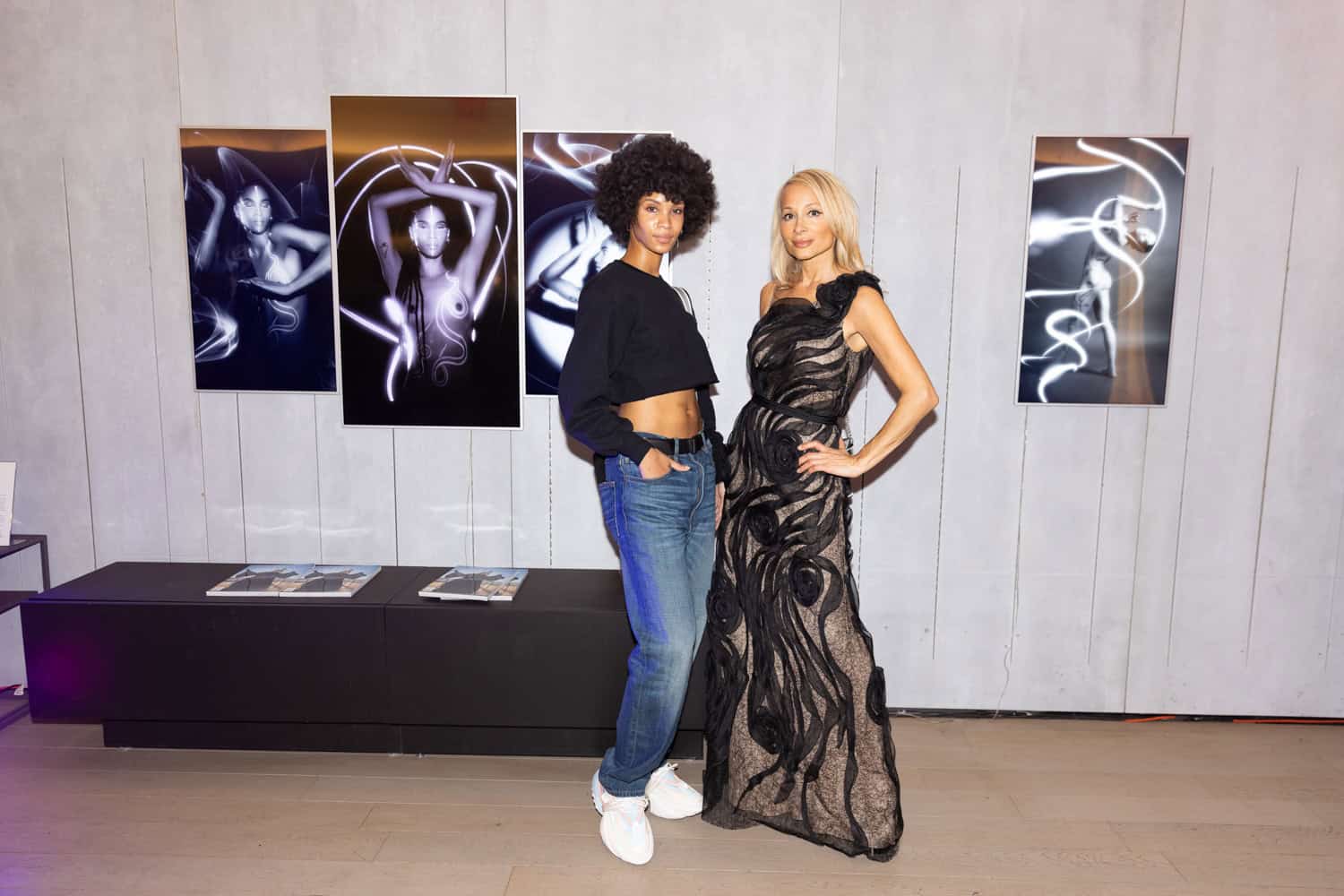
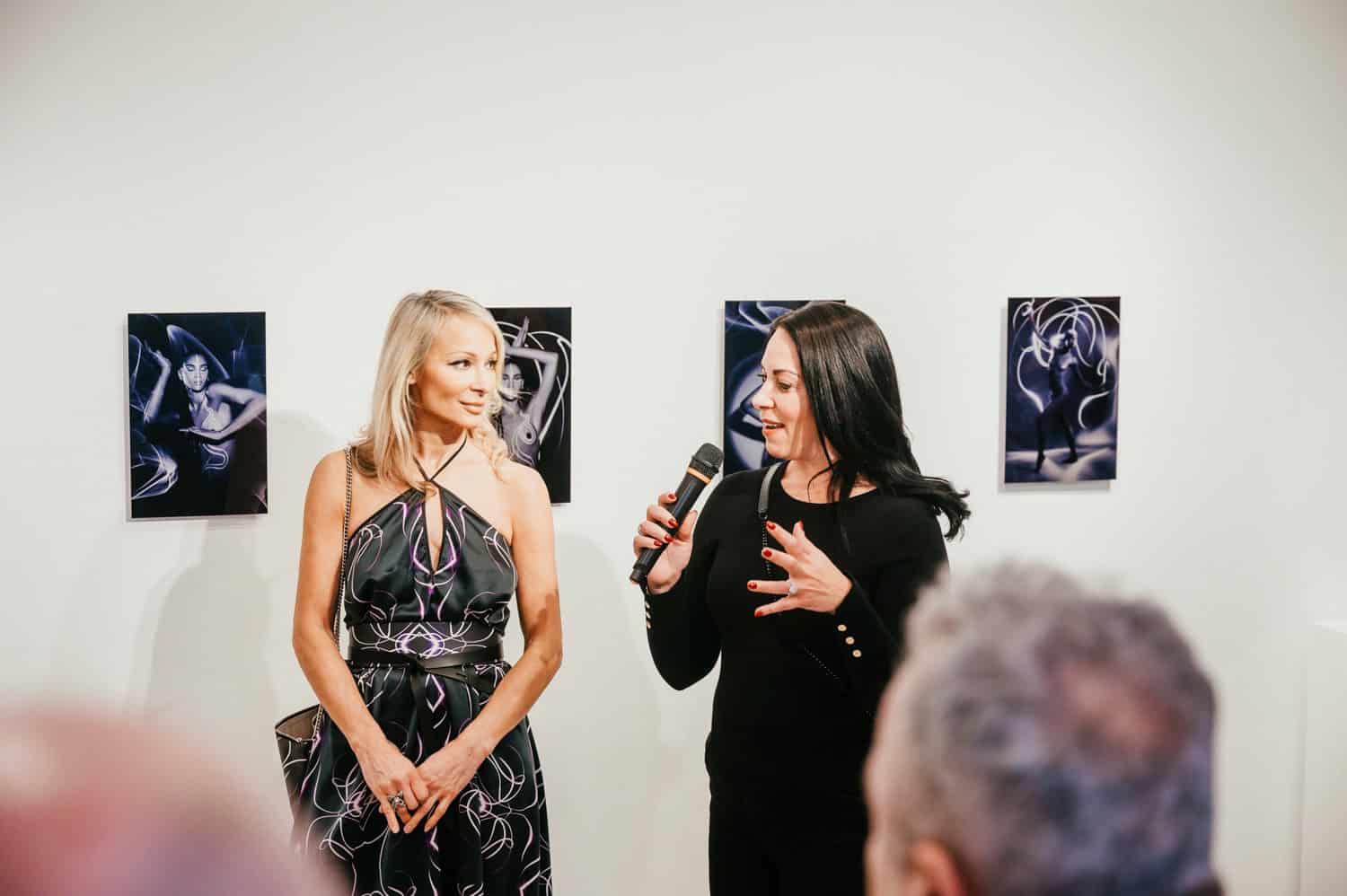
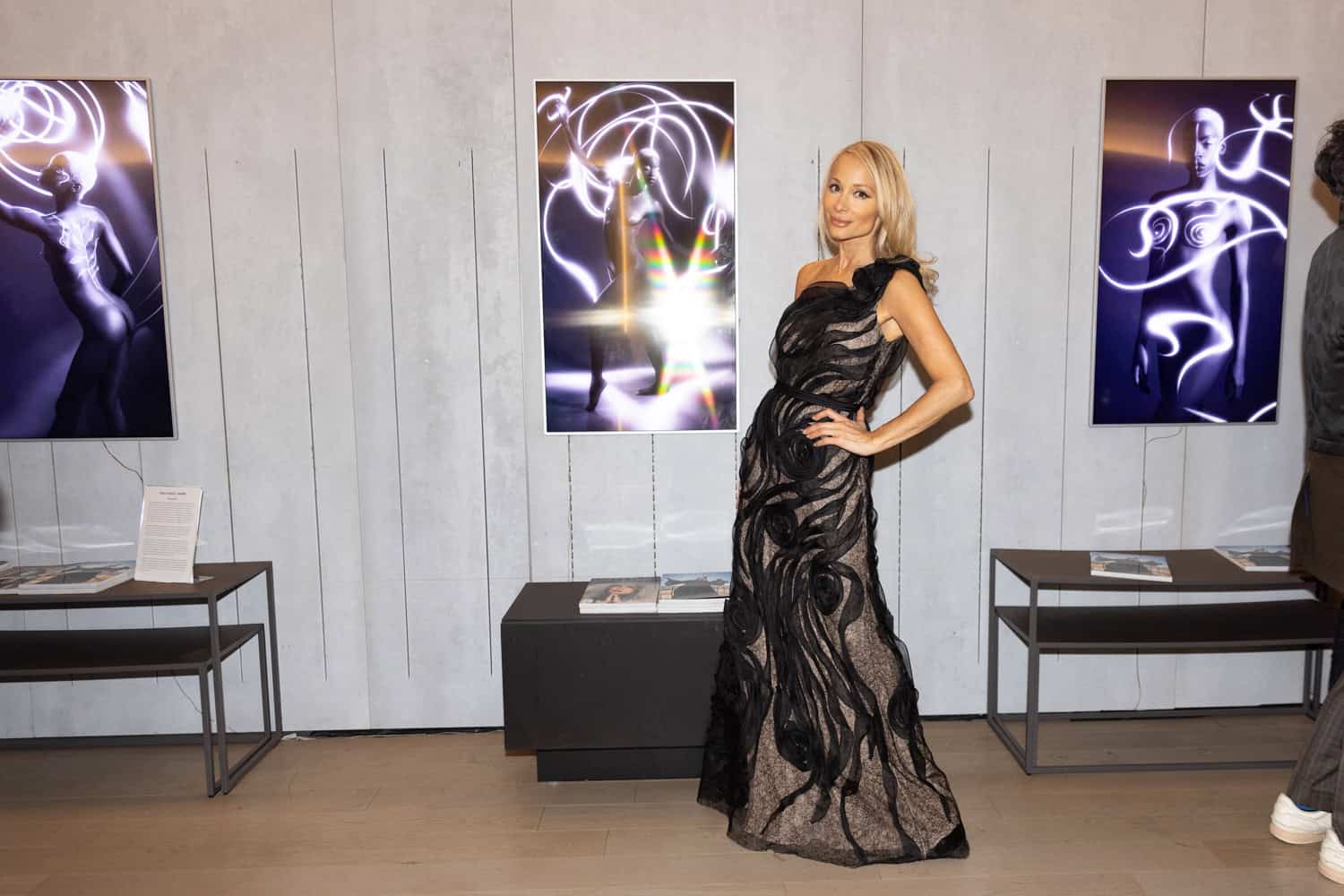
Lumière Exhibit courtesy of Indira Cesarine
IRK: You’ve exhibited your own artwork internationally. Could you share some insights into your artistic practice and the themes you explore in your work?
Indira Cesarine: Empowering feminist themes are often a point of departure for my multi-sensory series. Themes of gender, identity, sexuality, and the female experience feature prominently in my work, which spans photography, painting, sculpture, printmaking, mixed media, and video art. My artwork is often influenced by autobiographical content, my Latinx heritage, and women’s history. I connect with thematic subject matter that engages a narrative of social discourse and art activism. Women’s bodies have been objectified, commodified, and policed throughout history, and I use my art as a means of reclaiming that narrative and celebrating the inherent beauty and power of the feminine. Through my exhibitions and artwork, I challenge the status quo, as well as tackle stereotypes and double standards. I draw from historical narratives to create empowering artwork that can have an impact on the viewer, be a catalyst for change, or provide insight into history that may have been overlooked. Ultimately, my artistic practice is driven by a desire to shed light on the female experience, drawing from my personal experiences as a woman, as well as highlighting women who have inspired me or paved the way for equal rights. My work often delves into the complexities of the human form, using the body as a canvas to emphasize symbolism, often by incorporating body painting or light painting with the figure.
I have been exploring themes of Surrealism in my work since my very first forays into photography. Experimental darkroom techniques such as solarization and double exposures have played an important part of my visual narrative. While studying for my degree in Art History at Columbia University in Paris I became very interested in the history of Surrealism, and wrote a 30-page paper, “Surréalisme, Sexualité, et La Femme,” on the male gaze and misogyny of many of the original Surrealists. Presenting an empowering female perspective on images of women has always been an important part of my work. Explorations of female identity, sexuality, dreams, and desires have been recurring themes in my artwork since I first started creating. As my work evolved, I expanded from the still frame and works on canvas and paper to moving images, with experimental filmmaking and video art. I have also become inspired by creating 3-dimensional works in glass and steel that further propel my visual language. My sculptures explore themes of female identity, symbolism, and experience, employing a technical emphasis on light and reflection, often combining neon, text, casted resin, photography, or video to further engage a multifaceted experience.
I also often collaborate with dancers and performers to emphasize the power of the female form and the “divine feminine”. My recent solo show “LUMIÈRE” continued my exploration of the surreal technique of light painting with my portraits with contemporary dancers. This method involves using light as a brush, painting ethereal strokes onto canvases of darkness, thus capturing a play of luminosity that transcends the boundaries of traditional imagery. The nude silhouettes of each model became canvases adorned with vines, leaves, and spirals, with each stroke creating a visual embodiment of Mother Nature and symbolizing femininity, life, and growth. The spiral as a symbol of life and the eternal is depicted on their figures as well as in the light refracted into the camera lens, creating a spellbinding glow radiating around their silhouettes. My “LUMIÈRE” series is a continuation of many of the themes that were also present in my 2020 solo show “THE LABYRINTH” which was inspired by the maze of life, the power of human connection, emotion, and experience – combined with the surreal nature of the unknown.
IRK: What are your future plans and aspirations for The Untitled Space gallery, Art4Equality, and your personal artistic endeavors?
Indira Cesarine: I have so many projects going on at the moment it’s a really exciting time. We are expanding the digital footprint of the gallery with a lot more virtual exhibitions and activations. I am launching The Untitled Boutique which focuses on wearable art by our artists, including my own clothing collection using photo-printed fabric of my artwork as well as collections by some of our other artists with an emphasis on sustainable fashion. We also have a massive public art project in the pipeline for the gallery that I’m excited about, although I can’t share details about it yet. I envision The Untitled Space continuing to serve as a platform for diverse voices and art. I hope to expand our programming, outreach, and impact, fostering greater inclusivity and representation in the art world. With Art4Equality, I aim to grow our initiatives and partnerships, leveraging the power of art to drive positive social change. We are also launching the Art4Equality prize which will be an awarded cash grant to support artists whose work aligns with our mission.
On a personal level, I’m excited to continue developing my artistic practice. I recently presented my solo exhibit “LUMIÈRE” in partnership with MakersPlace at The Canvas 3.0 Gallery at the Oculus World Trade Center at the end of January, which continued at The Untitled Space through February 2024. “LUMIÈRE” was my first exhibition including NFT art, along with my photography and sculpture. The exhibit featured 20 animated photographic NFTs that were displayed on large-scale video monitors. I was also recently featured in the EVERY WOMAN Biennial, which was a massive group show of women and non-binary artists in March 2024. I am working on new artwork and potential exhibitions that will be coming up later this year. I am also always very busy with projects for The Untitled Magazine, including new shoots and interviews for the publication.
IRK: Before the gallery, you started The Untitled Magazine. What inspired you to start the magazine?
Indira Cesarine: I founded The Untitled Magazine in 2009 as a publication covering art, fashion, entertainment, and culture. It was important for me to present a publication that was different from traditional commercial magazines, one that celebrated creativity, diversity, and self-expression, while also addressed important social issues, and producing positive, inspiring, and progressive content. When I launched the publication, there were not many magazines that mixed fashion with art and culture, and I wanted to do something different that was inspiring across many creative arenas.
It was actually initially called XXXX Magazine, “The Untitled Magazine.” I had been working for many years previously as a photographer as well as a magazine editor for other publications while I was based in London and Paris. I was inspired to launch a multimedia publication that was a 3-dimensional experience for viewers featuring original films alongside editorial content, with special issues each revolving around a theme. For the first four issues (themed “Kaleidoscopic,” “Surreal,” “Voyeur,” and “Voyage”) we produced 20-30 original videos, including fashion films, video art, and documentary shorts which premiered in events at Art Basel Miami, Cannes Film Festival, and on The Big Screen Plaza outdoor cinema in New York City. The publication was invited to exhibit its original productions at the Metropolitan Museum of Art, The French Embassy Cultural Center for a fundraiser for the Louvre Museum with American Friends of The Louvre, and the La Jolla Film Festival at the Museum of Contemporary Art San Diego, among many other notable exhibits and screenings internationally. The magazine was very progressive for its time, and celebrated collaborations between artists, as well as creative freedom.
In 2011 I got offered a global distribution deal for a print edition of the magazine and it shifted from an emphasis on filmmaking to a more traditional print magazine. I relaunched it simply as “The Untitled Magazine,” with an emphasis on inspiring interviews with talent across entertainment, fashion, and contemporary art – positive role models that could inspire readers, and share insight into the challenges they faced along their path to success. I continued the concept of having themed issues, such as the “Legendary” Issue and “GirlPower” themed Issue. We celebrated our 10th Anniversary print edition with the “REBEL” Issue in 2022. The print magazine is complemented by our digital edition, and social channels, where we publish video and multimedia content to support the magazine’s editorials. In order to bring the magazine’s editorials to life we also present a lot of events with performances, exhibits etc, such as our recent event at Art Basel Miami in December 2023 at Soho Beach House, which featured a live performance with house music legend Crystal Waters along with premiering behind the videos from her cover shoot.
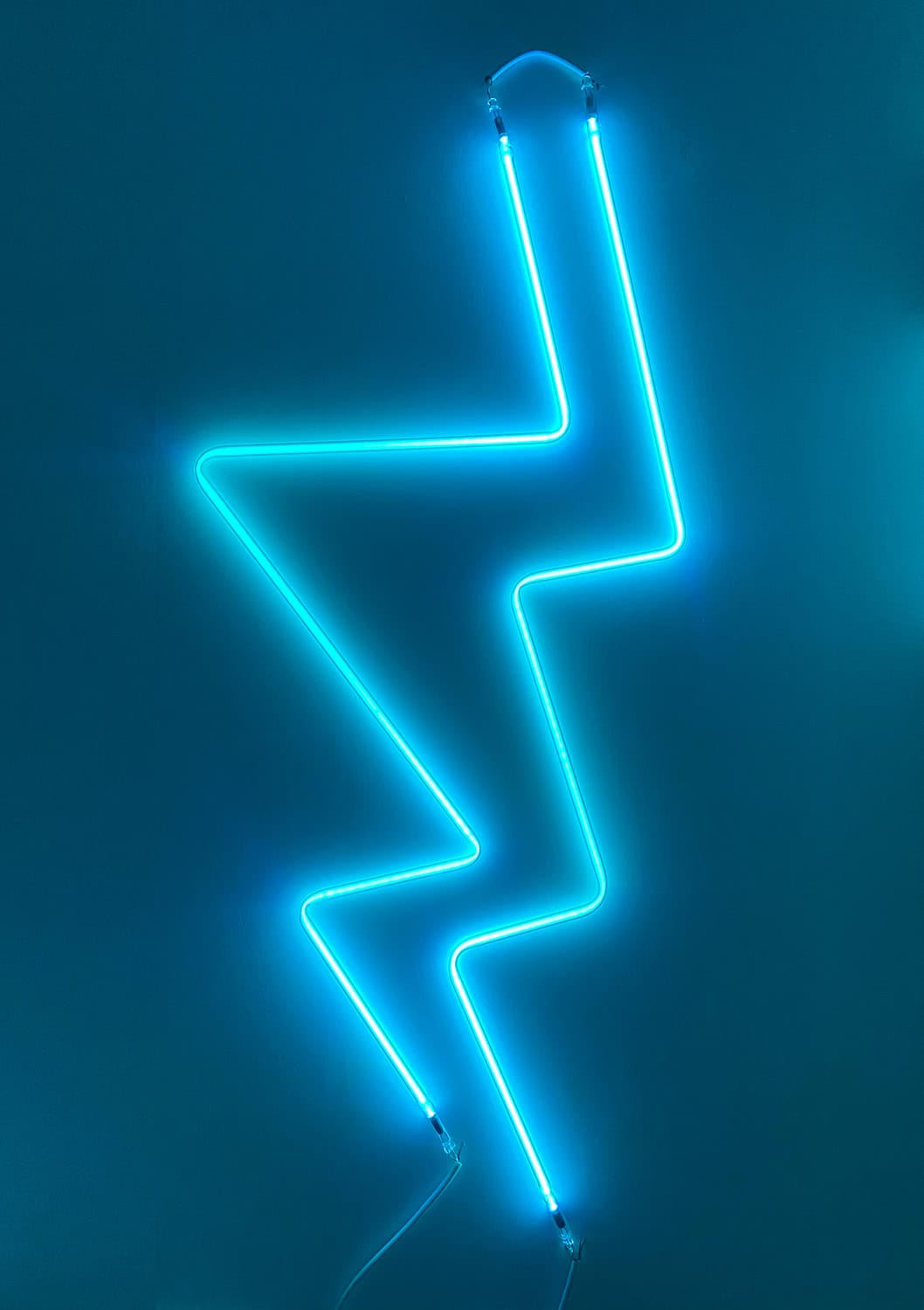
IRK: What niche did you aim to fill in the magazine industry?
Indira Cesarine: In launching The Untitled Magazine, I aimed to fill a crucial niche by offering a fresh, innovative take on arts and culture coverage. Rather than adhering to the traditional editorial approach, I curated a diverse, multidisciplinary mix of content that celebrates creativity and diversity with an emphasis on women and LGBTQ+ contributors. The magazine has always been unique with its bold editorial content. From in-depth profiles of trailblazing artists and designers to thought-provoking essays on pressing social and political issues, The Untitled Magazine offers readers a unique, intersectional perspective that challenges the status quo and pushes the boundaries of what was possible in the world of print and digital media. We were very early in the game with producing motion and video content and presenting an engaging 3-dimensional experience for our readers, that was in person as well as in print and online.
When I founded The Untitled Magazine there also was a distinct lack of representation and visibility for women creatives in the media landscape. At the time, the majority of mainstream publications were still dominated by male photographers and perspectives (the male gaze so to speak) relegating female creatives to the sidelines. I saw an opportunity to create a platform that would amplify these underrepresented voices, providing a space for them to share their stories, showcase their work, and inspire others. I remember when we produced the “GirlPower” issue of the magazine back in 2015, which exclusively featured women photographers, talent, and writers, people were literally shocked that it was possible to produce a whole magazine only featuring women creatives. We have come a long way since then, but I think there is still a lot of progress to be made with regards to representation and opportunities.
IRK: How do you choose which artists and creatives to feature in the magazine?
Indira Cesarine: All of our special issues are based on a specific theme. Curating each issue is a massive process that takes many months. We do a deep dive into the concept and also reach out to PR teams, casting agents, talent agencies, etc to pitch potential talent for the upcoming issue that is on the theme. Choosing the artists and creatives to feature in the magazine is a collaborative process involving myself, the editorial team, and contributing editors, writers, and photographers. We seek out individuals whose work pushes boundaries, challenges norms, and resonates with our mission and values. Diversity, both in terms of artistic style and background, is important, as we aim to create a platform that reflects the rich tapestry of human experience and expression.
We are always on the lookout for interesting artists and talent to feature that have a unique story to tell, whether for our special collector print editions or online. I like to feature talent with inspiring stories and often look for creatives who have had to overcome major obstacles in order to succeed. Reflecting diversity and showcasing underrepresented artists and creatives is extremely important to the publication. I seek out individuals whose practices are not only visually compelling but also imbued with a sense of purpose and a desire to create positive change. I’m drawn to feature content that has the power to inspire.
IRK: What role do you see The Untitled Magazine playing in promoting equality and diversity in the arts?
Indira Cesarine: The Untitled Magazine plays a vital role in promoting equality and diversity in the arts by amplifying the voices and perspectives of underrepresented creatives. By consistently featuring the work of female, LGBTQ+, and minority artists, designers, and cultural influencers, we’re actively challenging the traditional power structures and narratives that have long dominated the industry. Through our editorial content, interviews, and features, we seek to challenge stereotypes and inspire our readers. Ultimately, The Untitled Magazine is driven by a belief that representation matters, and that by elevating diverse, innovative voices, we can inspire lasting change and pave the way for a more equitable, inclusive creative landscape.
Share this post

